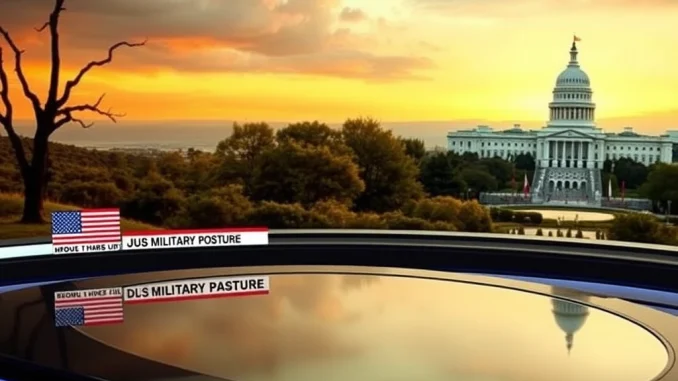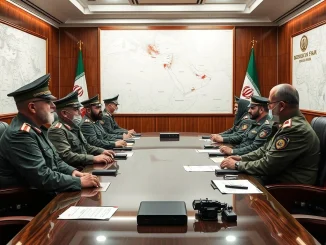
While global markets, including the crypto space, often react to shifts in geopolitical landscapes, clarity from official sources is paramount. Today, the focus is on the **White House Iran** dynamic, following reports that circulated earlier.
White House Iran: Setting the Record Straight
In a direct statement addressing recent speculation, a senior White House official moved to clarify the United States’ current military activities concerning Iran. Alex Pfeiffer, who serves as the Deputy Assistant to the U.S. President and Principal Deputy Communications Director, took to social media platform X to issue the denial.
Pfeiffer explicitly stated that American forces are currently maintaining a defensive posture. He emphasized that this stance has not changed, reinforcing the administration’s position. His message was clear: “We will defend American interests.”
This communication from the White House aimed to counter certain reports, particularly those originating from Israeli media outlets, which had suggested that the U.S. was actively conducting attacks within Iran.
Understanding the US Defensive Posture Amidst US Iran Tensions
The concept of a “defensive posture” is central to the White House’s message. It signifies that military forces are positioned and prepared to defend against potential threats, rather than initiating offensive actions. This is a key distinction in navigating complex geopolitical situations and managing **US Iran tensions**.
What does maintaining a defensive posture typically involve?
- Increased surveillance and intelligence gathering.
- Reinforced troop presence and equipment readiness.
- Positioning of defensive systems like missile defenses.
- Heightened alert levels.
It is a proactive stance focused on deterrence and protection, designed to safeguard personnel and assets without escalating to offensive conflict unless provoked.
Why the Iran Attack Denied Clarification Was Necessary
The need for the **Iran attack denied** statement arose from conflicting information circulating in the media. Reports suggesting U.S. offensive actions in Iran could have significant implications for regional stability and international relations. False reports can lead to misunderstandings, miscalculations, and unwanted escalation.
Providing a clear and timely denial from a high-level White House official helps to:
- Control the narrative and prevent misinformation from spreading.
- Reassure allies and signal intentions clearly to potential adversaries.
- Avoid market volatility and public anxiety caused by unfounded rumors.
Broader Context: Middle East Deployment and Preparedness
The denial comes within a broader context of ongoing military readiness in the Middle East. Earlier reports highlighted actions taken by the U.S. Department of Defense.
Fox News’ Lawrence Jones reported that President Donald Trump had previously instructed the National Security Council to ensure preparedness in the situation room. This indicates a level of high-level attention and contingency planning related to regional security.
Furthermore, U.S. Defense Secretary Pete Hegseth announced that he had authorized the **Middle East deployment** of additional defensive assets over the preceding weekend. This action aligns with the stated defensive posture, bolstering the capabilities of U.S. forces and partners in the region to protect against potential aggression.
These deployments are often precautionary measures taken during periods of elevated tension to enhance the resilience and responsiveness of forces already stationed there.
Navigating Geopolitical Currents: What Does This Mean?
The White House’s denial is a significant data point in understanding the current state of play between the U.S. and Iran. It suggests that despite underlying **US Iran tensions**, the immediate U.S. strategy remains one of deterrence and defense, rather than direct military engagement within Iranian territory at this time.
Key Takeaways:
- Official U.S. position: No offensive attacks in Iran are currently underway.
- Standing order: U.S. forces are in a defensive posture.
- Recent actions: Additional defensive assets deployed to the region.
- Context: Response to media reports and ongoing regional security concerns.
While the situation remains fluid, the clarity provided by the White House aims to prevent misinterpretation of U.S. actions and intentions in a sensitive region.
Summary: Clarity Amidst Speculation
In conclusion, the White House has forcefully denied reports claiming U.S. attacks in Iran. Officials have reiterated that American forces are maintaining a strict **US defensive posture** and are focused on protecting American interests. This clarification, issued amidst conflicting media reports and recent defensive deployments, underscores the administration’s effort to manage perceptions and prevent escalation through miscommunication regarding the complex **White House Iran** relationship. The focus remains on defense and preparedness in the Middle East.



